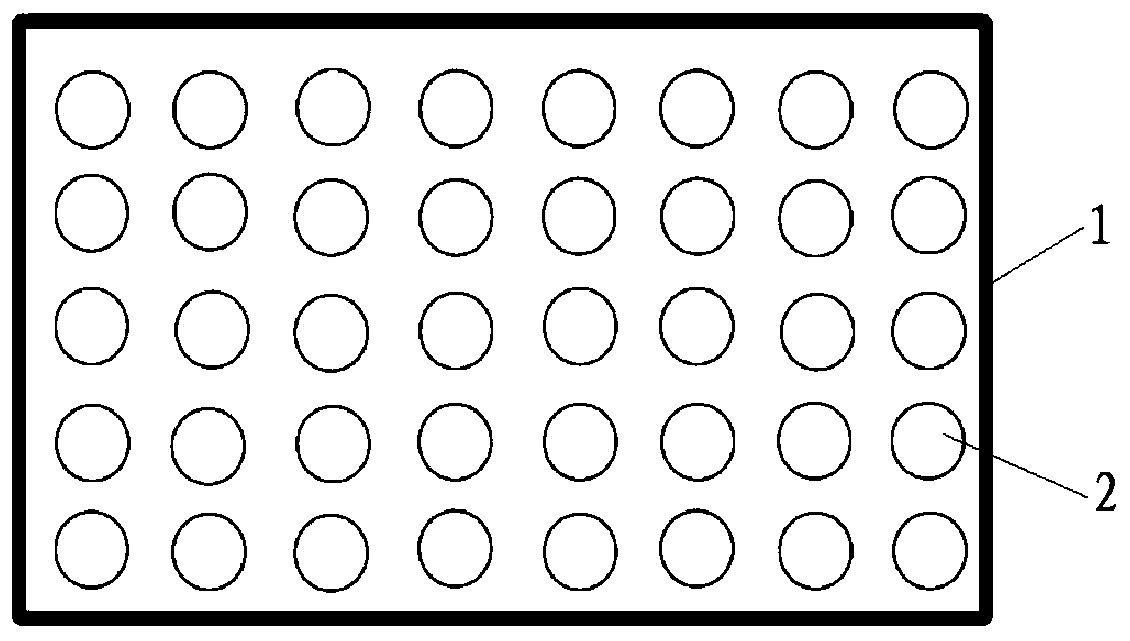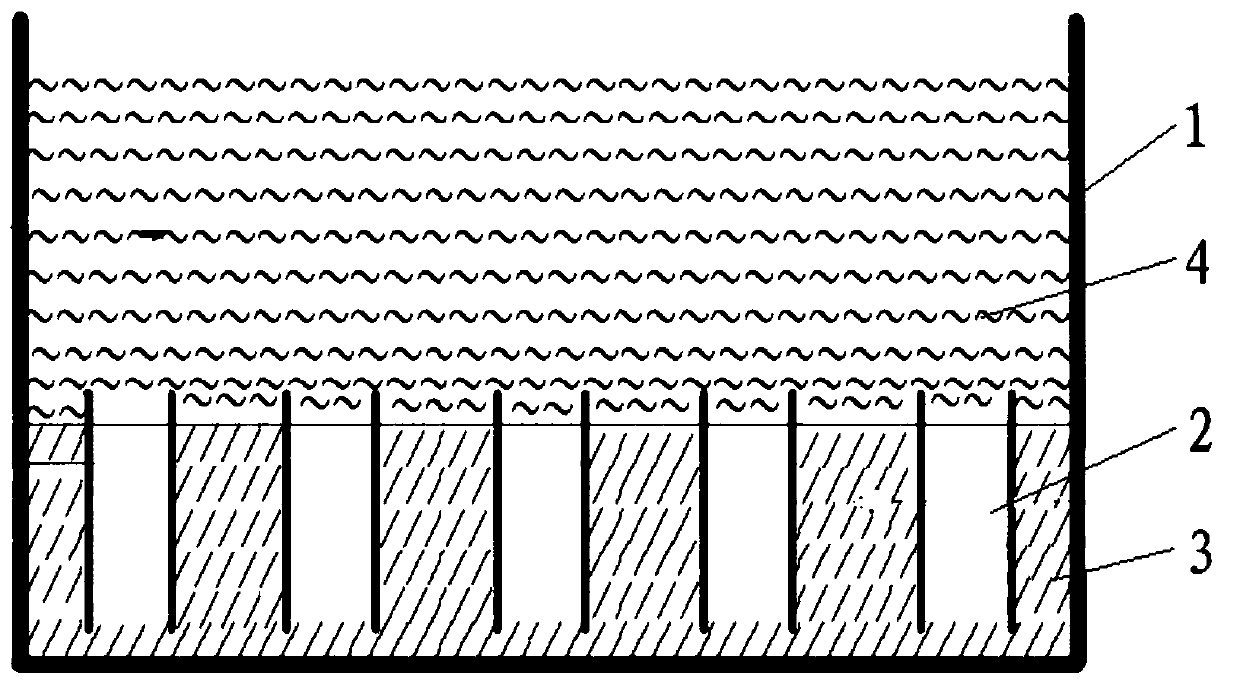Sinonovacula constricta sowing type culture method for experiments
A culture method and experimental technology, applied in the application, fish farming, climate change adaptation and other directions, can solve the problems affecting the cultivation of constricted clams, the large damage rate of constricted clams, and the decay of the bottom mud, and achieve the solution of mechanical damage, uniform distribution of constricted clams, Reduce the effect of labor
- Summary
- Abstract
- Description
- Claims
- Application Information
AI Technical Summary
Problems solved by technology
Method used
Image
Examples
Embodiment 1
[0035] 1. Collect the bottom mud after the ebb in the intertidal zone, and disinfect it with quicklime (amount of 120g / m 2 ), dried in the sun after disinfection;
[0036] 2. Put the dried bottom mud in the breeding box, add water, stir and wash it 3 times, so that the thickness of the bottom mud is 20cm;
[0037] 3. Evenly insert a culture tube with a diameter of 4cm into the bottom mud, and the height of the culture tube is 22cm;
[0038] 4. Add the seawater disinfected by bleaching powder into the breeding facilities, and the disinfection dosage is 23g / m 2 ;
[0039] 5. Put 1.5-2cm razor clam seedlings with the axe end down in the culture tube, aerated with oxygen, and the dissolved oxygen in the water is 7mg / L;
[0040] 6. After a period of time, observe the submerged mud of the razor clam, and adjust the position and angle of the razor clam if it has not submerged;
[0041] 7. Feed the mixture of chaetoceros and golden algae 3 times a day in the morning, noon and even...
PUM
 Login to View More
Login to View More Abstract
Description
Claims
Application Information
 Login to View More
Login to View More - R&D
- Intellectual Property
- Life Sciences
- Materials
- Tech Scout
- Unparalleled Data Quality
- Higher Quality Content
- 60% Fewer Hallucinations
Browse by: Latest US Patents, China's latest patents, Technical Efficacy Thesaurus, Application Domain, Technology Topic, Popular Technical Reports.
© 2025 PatSnap. All rights reserved.Legal|Privacy policy|Modern Slavery Act Transparency Statement|Sitemap|About US| Contact US: help@patsnap.com


